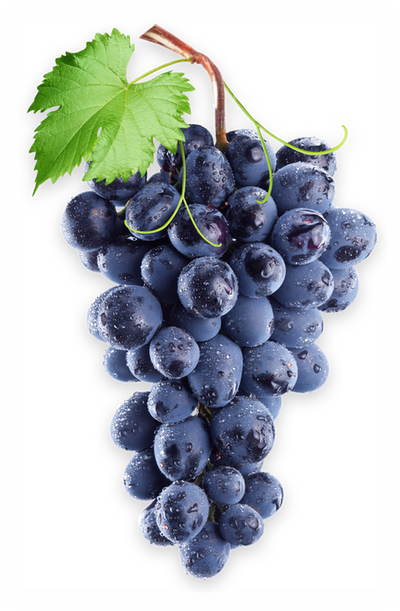From use case to show case

Guideline Value-Sensitive Design for Digital Farming
This guideline is intended for small and medium sized agri-tech startups in Europe who are designing and developing innovative digital technology applications for the agri-food domain. Initially this guideline has been developed to provide support to the use cases in the Horizon2020 project “Internet of Food & Farm 2020” (see https://www.iof2020.eu). The use cases encountered ethical challenges when developing innovative digital products and services for different agricultural sectors.
Introduction
Ethics is becoming more and more relevant in businesses developing technology for the agrifood sector. Why? These technologies raise various value-questions. These questions may focus on the advantages and risks of data sharing, the fair distribution of benefits between stakeholders or the effects that the use of technology can have on the distribution of power among actors in the value-chain. If these questions remain unanswered, this may have detrimental effects on the uptake, as end-users might not trust the eventual digital product and end up not buying it or using it. Ethical questions therefore need to be taken into account.
We want to help you to include ethics by guiding you to take into account all stakeholders’ values in your technology design and development process. This can be done with the so-called Value Sensitive Design method.
Why this method?
Value Sensitive Design (VSD) is a theoretically grounded approach to technology design that takes into account human values throughout the whole innovation process. (see for more information about the phases of VSD box 1)
Box 1: Info
Phases of Value Sensitive Design
How are values relevant for design?
Technology is not only successful when it functions reliably. It should also be valued by its users. It is for this reason that values should be taken into account during design. For example, it was important to take into account the values of users when designing a mobility application which support blind and deafblind people in using public transport. In the VSD process it appeared that the current technology for blind and deafblind people did not support the values that were most important to them: independence, trust, safety and security, and also affordability and comfort. To better support these identified values, technology developers designed a new system called MoBraille (“mobile braille”), that allows blind and deafblind people to access information via Braille on a small, regular smartphone. Additionally, based on iterative feedback from deafblind people, the tech developers designed a different interface for deafblind people than for blind people. (see box 2 for a more elaborate explanation of this example).
Box 2: Example
Iterative Value Sensitive Design process
On the next page you find this VSD guideline, explained in 8 steps.
VSD guideline

Box 1
The three phases of value sensitive design
Value Sensitive Design (VSD) consists of the following three phases, therefore it is also called the tripartite methodology (Friedman & Hendry, 2019):
- A conceptual research which includes philosophically based analysis of the central constructs and issues to be investigated. What values do we consider important? How should we make a trade-off between competing values such as access versus privacy, or security versus trust?
- An empirical study which focuses on the human response to the technical artifact and the social context in which the technology resides.
- A technical investigation focused on the design and performance of the technology itself, which concerns both existing technologies and the design of new technical systems.
VSD does not replace but is complementary to the existing user design process of a technology. Like Umbrello and De Bellis (2018: 14) stated: “Value sensitive design can and should be integrated and take into account existent design approaches employed by engineers and designers of intelligent agents."
The application of VSD has resulted in actual changes in or adjustments to the technology design (Winkler and Spiekermann, 2018). There are many examples of technology development projects that used the full tripartite method. Few projects also iterated between the three types of research. By examining the way these projects have applied the VSD method, technology developers can learn how to apply the VSD method for their own technology designs.
Box 2
Example of an iterative Value Sensitive Design process
making a mobility app for blind people
Conceptual research
In the conceptual research the researchers identified the key stakeholders – both direct and indirect stakeholders - related to applications that support blind and deafblind people in using public transport. Then researchers made a first identification of values at stake in the domain. For this, the researchers used the UN Convention on the Rights of People with Disabilities. They also found other values that play a role such as security, trust and privacy. Safety turned out to be very important for the potential users.
Empirical study (1): identifying values
In this phase the researchers conducted 30- to 45-minutes semi-structured interviews with 6 blind adults (2 men and 4 women). The 6 participants gave the highest priority to the values ‘independence’ and ‘trust’. They expressed great concern about ‘safety’. The participants often asked other people for information about their environment, but people who give reliable information are not always present. They preferred to access information on their iPhone or GPS system (in accordance with the importance of independence). But getting the information by speech can be distracting and unsafe or difficult to hear when they are in the bus or train. The present professional specialized supporting technology was expensive and inconvenient to carry.
The researchers also conducted 30-minute semi-structured interviews with 7 deafblind adults (4 men, 3 women) and an instructor who provides orientation and mobility training to deafblind people. As with the blind participants, the values of independence, trust and security were prioritized/highlighted in the interviews. All deafblind participants and the instructor associated access to information with the values security and trust. This information is about a person's physical environment (e.g. trees in the middle of sidewalks), bus arrival times, upcoming bus stops and communication with the driver.
The researchers also included bus drivers in the conceptual study because they are the main indirect stakeholders for the technology application. The bus drivers who accidentally transport the blind and deafblind are responsible for the safe arrival at their destination. The researchers sent a survey on drivers' opinions and values to 500 bus drivers. The surveys were completed anonymously. The response was 47%. The survey mainly focused on real-time switching information tools. Part of the survey included questions about passengers who are blind or deafblind. The researchers coded the answers by grouping them into positive, neutral and negative feelings about the carriage of blind or deaf-blind passengers. With few exceptions, responses were very positive.
Technical investigation
Assess current technology
Already in the former empirical research phase, the researchers described current technology, including GPS systems, Braille annotation devices and wearable communication devices especially for deafblind people. These technologies give access to information that provides a certain degree of independence for blind and deafblind people. Other values that were important to the participants were not yet supported by current technology, such as affordability and comfort. Blind participants said that information in Braille had several advantages over information in speech. But deafblind participants have no speech and therefore need Braille devices.
The MoBraille Framework
To better support the identified values, the researchers designed a system that allows blind and deafblind people to access information via Braille on a small, regular smartphone. The system was called MoBraille ("mobile braille").
GoBraille for the blind in public transport
The researchers also developed a MoBraille application (called GoBraille) for the blind that enabled them to get information about (1) the nearest intersection and address, (2) real-time bus arrival for nearby stops and (3) non-visual landmarks and specific location information about nearby stops. In addition, the researchers have also developed a version of GoBraille for deafblind people that gives them real-time information about the bus arrival at his or her current stop. Based on iterative feedback from a deafblind participant, the researchers simplified the interface for deafblind people.
Empirical study (2): evaluating the designed technology applications
Evaluation of GoBraille for the blind
The researchers had GoBraille assessed by 10 blind adults who regularly rode the public transport bus. The evaluation focused on the new aspects of the GoBraille. The evaluation was conducted on a sidewalk of a busy street and near several bus stops. After the researchers explained how the GoBraille application worked, the 10 blind participants were given several tasks to perform using the application. When the tasks were completed the researchers conducted a 20-minute semi-structured interview with the 10 participants. The aim of the interview was to determine how the access to GoBraille’s various information sources would affect a participant's sense of independence and security when using public transportation. The researchers wanted to know how the input and output in Braille interacted with the system. It turned out that the participants were very satisfied with the system.
Co-design with a blind-deaf person
The researchers developed a version of GoBraille for deafblind people by working with a deafblind person who used the bus regularly. This happened in 3 sessions of 1.5 hours each. In each design session several problems emerged. The lessons the researchers learned from this co-design process have been translated into three general guidelines that can be used for designing such applications.
Source: Azenkot, S., S. Prasian, A. Borning, E. Fortuna, R.E. Ladner, J.O. Wobbrock, 2011. Enhancing Independence and Safety for Blind and Deaf-Blind Public Transit Riders. CHI 2011. Vancouver, BC, Canada.